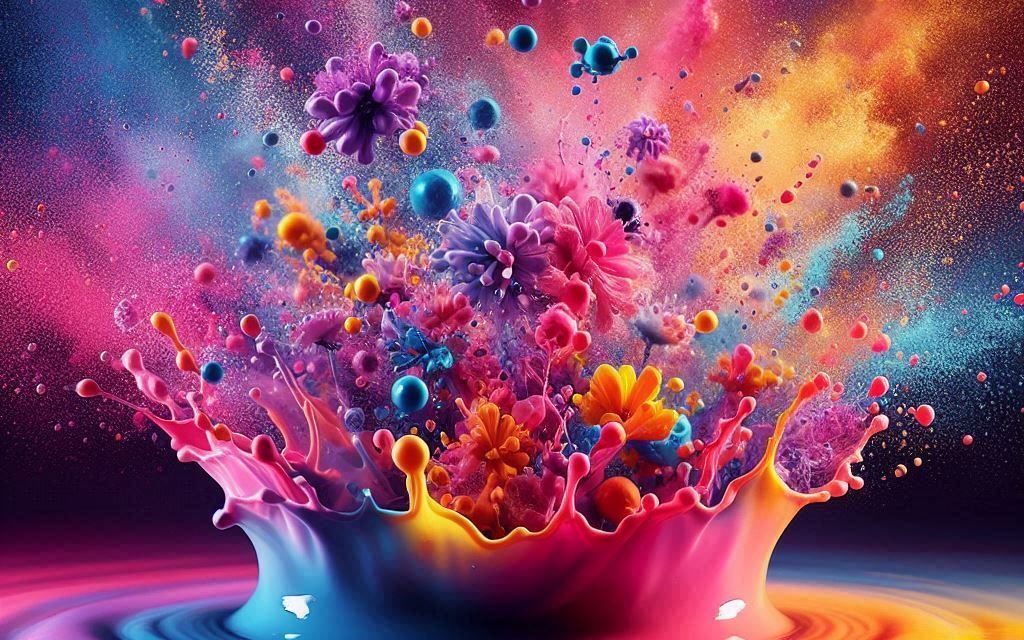Table of Contents
The Evolution and Impact of Digital Sculptures in Contemporary Art
Digital sculptures have emerged as a groundbreaking medium that bridges the gap between traditional sculpting techniques and cutting-edge technology. These virtual creations, crafted using sophisticated software and digital tools, offer artists unprecedented freedom and flexibility.
Historical Context and Significance
The Genesis of Digital Sculptures
The concept of digital sculptures can be traced back to the late 20th century, coinciding with the advent of computer graphics and 3D modeling software. Early pioneers like William Latham and Michael Noll experimented with algorithmic art, laying the groundwork for future digital sculptors. The 1990s saw significant advancements with the introduction of software like Autodesk Maya and ZBrush, which revolutionized the way artists approached 3D modeling.
The Digital Renaissance
The 21st century marked a digital renaissance, with artists embracing technology to push the boundaries of traditional sculpture. Digital sculptures gained prominence in various fields, including video games, film, and virtual reality. This period also witnessed the rise of 3D printing, allowing digital sculptures to transcend the virtual realm and manifest as tangible objects.

Caption: A stunning example of a digital sculpture created using ZBrush, showcasing intricate details and lifelike textures.
Techniques and Tools
Software and Tools
Digital sculptors rely on a plethora of software and tools to bring their visions to life. ZBrush, Blender, and Autodesk Maya are among the most popular programs, offering a range of features from basic modeling to advanced texturing and rendering. These tools enable artists to manipulate virtual clay with precision, creating intricate details that would be challenging to achieve through traditional methods.
The Process of Digital Sculpting
The process of digital sculpting typically begins with a basic 3D model, often referred to as a “base mesh.” Artists then use digital brushes to sculpt and refine the model, adding details and textures. The final step involves rendering, where the sculpture is lit and shaded to create a realistic or stylized appearance. This process allows for endless experimentation, as artists can easily undo changes and explore different creative directions.

Caption: The step-by-step process of creating a digital sculpture, from base mesh to final render.
Expert Commentary and Interpretation
The Artistic Freedom of Digital Sculptures
One of the most significant advantages of digital sculptures is the unparalleled artistic freedom they offer. Unlike traditional sculpting, which is often constrained by physical materials and tools, digital sculpting allows artists to experiment without limitations. This freedom has led to the creation of highly imaginative and complex works that challenge conventional notions of sculpture.
The Intersection of Art and Technology
Digital sculptures also represent the intersection of art and technology, highlighting the symbiotic relationship between the two. As technology continues to evolve, so too does the potential for digital sculptures. Innovations such as virtual reality and augmented reality are opening new avenues for artists to create immersive and interactive experiences, further blurring the lines between the virtual and physical worlds.

Caption: An artist using virtual reality to create an interactive digital sculpture.
The Role of Digital Sculptures in Various Industries
Entertainment and Media
Digital sculptures have found a significant place in the entertainment and media industries. In video games, characters and environments are often created using digital sculpting techniques, resulting in highly detailed and lifelike models. Films, especially those heavy on special effects, rely on digital sculptures for creating fantastical creatures and intricate set designs. The ability to manipulate and animate these digital models has revolutionized storytelling, allowing for more immersive and visually stunning experiences.

Caption: A digital sculpture used in a blockbuster film, showcasing the detailed craftsmanship involved.
Fashion and Design
The fashion industry has also embraced digital sculptures, particularly in the realm of 3D-printed clothing and accessories. Designers use digital sculpting software to create intricate patterns and structures that would be impossible to achieve through traditional methods. This innovation has led to the creation of avant-garde fashion pieces that push the boundaries of design and functionality.

Caption: A 3D-printed dress designed using digital sculpting techniques, highlighting the fusion of technology and fashion.
Education and Research
In education and research, digital sculptures serve as valuable tools for visualization and analysis. In fields such as archaeology and paleontology, digital sculpting allows for the reconstruction of ancient artifacts and fossils, providing insights into historical and prehistoric life. Medical professionals use digital sculptures to create detailed anatomical models for educational purposes and surgical planning.

Caption: A digital anatomical model used in medical education, demonstrating the precision and detail achievable through digital sculpting.
Challenges and Future Directions
Overcoming Technical Limitations
Despite the numerous advantages, digital sculpting is not without its challenges. Technical limitations, such as software compatibility and hardware requirements, can pose obstacles for artists. Additionally, the learning curve associated with mastering digital sculpting software can be steep, requiring significant time and effort.
The Future of Digital Sculptures
Looking ahead, the future of digital sculptures is promising, with advancements in artificial intelligence and machine learning poised to further revolutionize the field. AI-driven tools can assist artists in automating repetitive tasks, allowing them to focus on the creative aspects of their work. Moreover, the integration of blockchain technology could provide new avenues for artists to authenticate and monetize their digital creations.

Caption: An artist using AI-driven tools to enhance their digital sculpting workflow.
Digital sculptures represent a dynamic and rapidly evolving art form that continues to push the boundaries of creativity and technology. From entertainment and fashion to education and research, the impact of digital sculptures is far-reaching and transformative. As we look to the future, the potential for innovation in this field is boundless, promising exciting developments and new opportunities for artists and creators.
For those eager to explore the world of digital sculptures further, consider engaging with online communities, attending workshops, and experimenting with various digital sculpting software. The journey into digital sculpting is one of endless possibilities, limited only by the imagination.
Suggested Further Reading
- “Digital Sculpting with Mudbox: Essential Tools and Techniques for Artists” by Mike de la Flor
- “3D Printing and Additive Manufacturing: Principles and Applications” by Chee Kai Chua and Kah Fai Leong
- Online platforms like Udemy and Coursera for digital sculpting courses
Digital sculptures have undeniably transformed the landscape of contemporary art, offering new possibilities for creativity and expression. As technology continues to advance, the potential for digital sculptures is boundless, promising exciting developments in the years to come. For those interested in exploring this dynamic art form further, consider delving into resources such as online tutorials, digital art communities, and exhibitions showcasing digital sculptures.



No responses yet